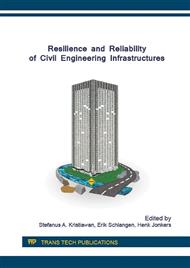p.106
p.113
p.119
p.126
p.132
p.140
p.148
p.154
p.158
Experimental Study on Flexural Behavior of Reinforced Concrete Beams with Variety Lap Splices of Reinforcing Steel Bars
Abstract:
The limited lengths of reinforcing bars have been commonly found in the practical construction of most reinforced concrete structures. The required length of a bar may be longer than the available stock of steel length. For maintaining desired continuity of the reinforcement in almost all reinforced concrete structures, some reinforcing bars should be carefully spliced. In the case of long flexural beam, bar installers end up with two or even more pieces of steel that must be spliced together to accomplish the desired steel length. An experimental study was conducted to investigate flexural behavior of reinforced concrete beams utilizing a variety lap splices of reinforcing steel bars under two-point loading. Five variations of lap splices of reinforcing steel bars positioned at midspan of tensile reinforcement of the beam were investigated. Welded joints and overlapped splices were used to construct the variation of lap splices of reinforcing steel bars. The general trend in crack pattern, the load deflection characteristics and the mode of failure of flexural beams under two-point loading were also observed. The flexural strength comprising load-displacement response, flexural crack propagation, displacement ductility is briefly discussed in this paper.
Info:
Periodical:
Pages:
132-139
Citation:
Online since:
July 2016
Authors:
Keywords:
Price:
Сopyright:
© 2016 Trans Tech Publications Ltd. All Rights Reserved
Share:
Citation:


